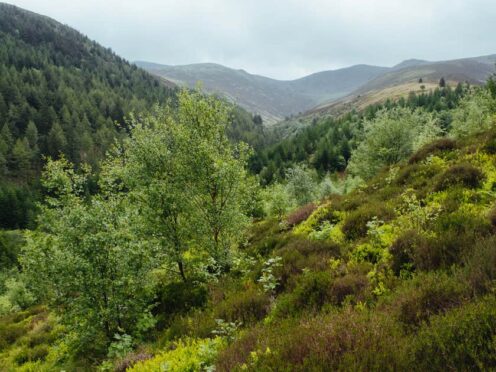
More than 8,000 hectares of land will be left to nature as part of a new forest management approach to boost wildlife and biodiversity.
Forestry England, which manages more than 250,000 hectares of land across the country, said the restoration project will be rolled out in areas of four forests.
The land managers will carry out a mix of activities to help nature recover in Kielder Forest in Northumberland, Newtondale in North Yorkshire, Purbeck in Dorset and Neroche in Somerset.
Andrew Stringer, Forestry England’s head of environment, said: “We will intervene less in these four wild areas, giving nature the time and space to reshape the forest landscape.”
The Kielder Forest, the biggest new wild area, covering at least 6,000 hectares, will be restored to a fully-functioning upland ecosystem, with the expansion of native woodland and scrub and the creation of more open habitats like peatland and natural water courses, the organisation said.
Other activities in the areas could include reintroducing lost wildlife including butterflies, rare plants, pine martens and beavers as well as wild cattle or moving fungi to restore soil.
The areas will welcome visitors but will continue to be a source of sustainable timber through an innovative model of productive forestry, Forestry England added.
“There is an exciting unpredictability about this work in our four wild areas,” Mr Stringer said.
“We simply don’t know exactly how each of them will change over time or the detail of what they will look like.
“But this uncertainty is a positive part of being experimental and allowing natural processes to shape each landscape in the years ahead.
“We are confident that whatever happens these areas will become more nature-rich, with benefits for neighbouring landscapes.”
He added that forestry will “still be an essential activity” but that over time the benefits of less intervention “will be enormous in terms of climate resilience, reversing biodiversity loss, providing greater natural capital benefits to society such as natural flood mitigation, soil health, air quality and carbon storage”.
Forestry England said the project is being funded by the Government and Forest Holidays and its teams will work alongside nature restoration and scientific data-gathering experts to analyse progress.
The soil eDNA baseline data gathered in all four wild areas will be free to access as part of Forestry England’s commitment to open data sharing, collaboration and building a strong evidence base for wilding activities, the organisation said.

Enjoy the convenience of having The Sunday Post delivered as a digital ePaper straight to your smartphone, tablet or computer.
Subscribe for only £5.49 a month and enjoy all the benefits of the printed paper as a digital replica.
Subscribe